Perfecting the Martial Art
This examination of Asian culture covers the beliefs that fortified the ruling class while emphasizing those that stood the test of time and that have survived to the present day. They are presented solely to garner a sense of the distant past in all its splendor and vitality while revealing their presence within narratives of the future. The objective is to recognize those elements that were sought by Asian emperors for strategic purposes and not necessarily for individual complacency nor collective annihilation. This viewpoint stands as an appreciation of the wisdom provided as part of the training regimen that was imparted to each conscript, male or female. In furthering the point, some content relative to mode of entertainment and foreign contribution to the culture has been incorporated to further address the level of creativity that was part of the experience during that particular era and that has permeated into modern circles.
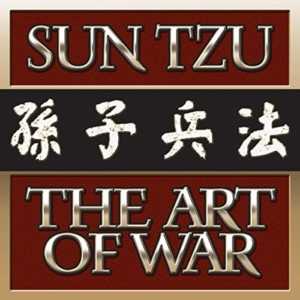
In a saga that has stood the test of time, the Chinese philosopher Sun Tzu inscribed what are considered to be strategies, tactics, and predictions for outcomes where the odds are unfavorable and when the forces are disparate. Sun Tzu is credited with extracting valuable ploys of gamesmanship from an actual combat scenario between the state of Wu and the neighboring kingdom of Chu. Each strategy was recorded using 20 Chinese characters and engraved vertically on bamboo slats that were, in turn, threaded together. The Wu army of 33,000 men overpowered an opposing army 10 times larger standing vigilant throughout the Chu province. The Wu army accomplished this by applying the principles set forth by Sun Tzu. The messages encoded on the slats have been subsequently valued as a repository for re-evaluation of other battles such as the Civil War, World War II, and the Vietnam War. When the messages were recorded about 500 B.C., they comprised nearly 13 chapters and remained the privileged retinue of emperors and scholars for over 1,000 years. Since its discovery, the Tzu principles have proven applicable to leadership development in various fields of discipline, not limited to athletics, politics, and business. These rules for military confrontation were pivotal for success during imperial China, due in part to their commitment to a set plan of action, a vital element in any combat situation. Among the many keen parcels of wisdom found within the text, the most transcending is this one.
There are not more than five musical notes, yet the combinations of these five give rise to more melodies than can ever be heard. There are not more than five primary colors, yet in combination they produce more hues than can ever been seen. There are not more than five cardinal tastes, yet combinations of them yield more flavors than can ever be tasted. (Sun Tzu)
In the 8th century, the fabled Tzu philosophy appeared in Japan by way of Korea. The samurai warriors consulted The Art of War for their own military conquests. It was not until the 18th century that the text was eventually translated into French by the Jesuit missionary, Father Amiot. The French emperor Napoleon Bonaparte subsequently sought its insights on military science as he encroached onto the battlefields of Europe. Historically, the text was first translated into English in 1910 by Lionel Giles. By other accounts, an earlier 1905 English version derived by Captain Calthrop appeared in Tokyo and, similar to French and British equivalents, has resurfaced uninterrupted in print ever since. The Japanese culture bears homage to the legendary Chinese general with a statue that stands victorious in Yurihama, Tottori. A gesture not unique to the Asian continent since The Art of War, both the Sun Tzu and the Niccolò Machiavelli versions, remain recommended reading for students of West Point Military Academy.
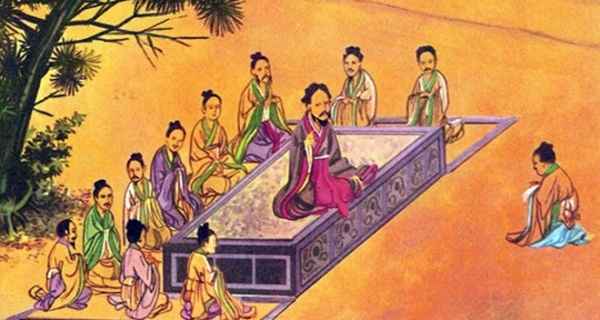
While is it the norm to record philosophy, wisdom, or knowledge for prosperity, other insights intended for prosperous living were merely handed down to followers who, in turn, recorded them for further contemplation. One such occurrence were the analects of Confucius. Though his lineage is unclear, Confucius devoted much of his working years to the Chinese bureaucracy through incremental roles of responsibility. The wisdom attributed to his teachings began after departing from the waning integrity of his superiors and the endemic bickering of contemporary feudal states. Upon returning from a decade long retreat, Confucius began an extended period of preaching the principles of social order and moralistic character to the public. His most ardent supporters diligently preserved his sayings which were announced at the Apricot Terrace into what is now regarded as the analects, or Lunyu.
Those teachings, more commonly known as The Analects of Confucius, were sought in the province of Lu where Confucius was born and where he resided from 551 to 479 BC in what is known as the city of Qufu. This area on the eastern coast of China was once governed by the German empire from 1898 until 1914, and is now recognized as Shandong. The principles belying the analects persisted in stark contrast to the ignominious conduct of the Chinese royal factions. Perhaps owing to this reality, a revival of this movement re-emerged through the 11th century. The movement of Neo-Confucianism coexists with other elements of the Taoist and Buddhist faiths by seeking the objective of intellectual and spiritual growth. Its influence has piqued the ideologies of Japan and Korea; if not, legions of Chinese generations with many Western countries counting themselves among the audience of mass appeal. The three schools of thought represent an ideal state of harmony between social entities (Confucianism), simplicity within nature and by divinity (Taoism), and personal vibrancy (Buddhism).
Once a person has reached enlightenment in one thing, he will have an enlightened mind and understand many things. (Yamamoto Tsunetomo, Hagakure: The Book of the Samurai)
In 10th century Japan, the territory consisted of the empirical center located in Kyoto. The vast provincial lands surrounding the ancient capital of Kyoto were warring states that depended on samurai lords for protection and order. The chieftain of each province recruited local farmers and provided the training and weaponry to quell battles that posed a risk to the empire. The samurai clans grew to formidable numbers to the point that their political influence was tantamount to the empire itself, rising to a veritable aristocracy in the process. The power of the samurai clan peaked in the 12th century proclaiming a status approaching the level of bureaucratic standing. The last significant samurai enclave met their demise in mid-1870 whereby the unification of Japan was implemented through the effort of Tokuawa Ieyasu and other Shogun leaders.
Black Rain (1989) — Director Ridley Scott
The Japanese Nō theatre or the drama otherwise referred to as the ‘perfected art’ flourished in the 14th and 15th centuries and is designated a venerable cultural property by UNESCO. The Nō dramas have been highly regarded for their literary merit in conveying such ideas as the relationship between god, family, love, and the ramification of greed and desire. These plays have endured largely through the genius of dramatist Zeami Motokiyo, who achieved prominence as an aesthetician, actor, and playwright. The Nō performances address many subjects through an intricate blend of music, dance, mask, costume and language, but with a strict adherence to ‘form’ over the customary ‘meaning’ behind the acting. Using a structure that is meticulously ritualized, the spiritual and sensuous beauty of these works has been a profound influence for English-speaking artists including Irish poet William Butler Yeats. Yeats was one of the foremost figures of 20th-century Irish and British literature and collaborated on the establishment of the Abbey Theatre among other pertinent accolades. Another follower of the Nō portrayals is Ezra Pound who was an expatriate American poet and critic. Pound’s contribution to poetry began with his development of Imagism, a movement derived from classical Chinese and Japanese poetry that emphasized clarity, precision and economy of language. Pound was awarded the Bollingen Prize in 1949 by the Library of Congress for an unfinished 120-section epic, The Cantos (1917–1969).
In the 500 years preceding the 10th century, the influx of song, dance, and chanted poetry from China and Korea began to rival the philosophical teachings entering the country from India and Tibet. These foreign influences melded into Gagaku, a body of work that consists of wind, string, and percussion instruments. These recitals have persisted through the ages under the aegis of the Japanese Imperial family, allowing audiences from all levels of society and all corners of the globe to view by television broadcast or live at the Imperial Palace. Among some of the most highly recognized practitioners of the Gagaku tradition is the art visionary Yoko Ono.
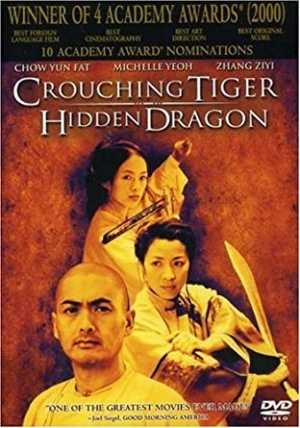
An 1184 poem from the Japanese Nō dramas recounts a duel between two warriors in the Battle of Ichi no Tani. It meditates on the dilemma between the violence of maintaining order and the senselessness often resulting from fatality; exalting in the process, the noble act of ending life in service to the empire.
Then, in time, His Majesty’s ship sailed,
with the whole clan behind him in their own.
Anxious to be aboard, I sought the shore,
but all the warships and the imperial barge
stood already far, far out to sea.
I was stranded. Reining in my horse,
I halted, at a loss for what to do.There came then, galloping behind me,
Kumagai no Jirô Naozane,
shouting, “You will not escape my arm!”
At this Atsumori wheeled his mount
and swiftly, all undaunted, drew his sword.
We first exchanged a few rapid blows,
then, still on horseback, closed to grapple, fell,
and wrestled on, upon the wave-washed strand.
But you bested me, and I was slain.Now karma brings us face to face again.
“You are my foe!” Atsumori shouts,
lifting his sword to strike; but Kumagai,
with kindness has repaid old enmity,
calling the Name to give the spirit peace.
They at last shall be reborn together
upon one lotus throne in paradise.
Rensho (Kumagai), you were no enemy of mine.Pray for me, O pray for my release!
Pray for me, O pray for my release!
To those who survived the tumultuous paths of victory, the seamless promotion from warrior to statesman was attributable to the indoctrination of each samurai. Starting at a young age, each was instructed in multiple schools of thought including: Chinese principles, poetic writings, Zen Buddhism, and spirituality. Their conduct and allegiance toward their master was encouraged through rigorous moral and ethical codes that were based on Confucianism and that cultivated discipline in all aspects of life. Around 1645, Miyamoto Musashi wrote The Book of Five Rings that reveals the influence that Tibetan philosophy had on military strategy. Though the book is concerned with subduing the enemy by the sword and horse-mounted archery, it has endured for its valuable insights in matters beyond hostility. The passing down of proficiency in swordsmanship, cavalry, and warrior acumen was not limited to men as most women received provisional training to guard their home in the absence of the samurai during protracted battle.
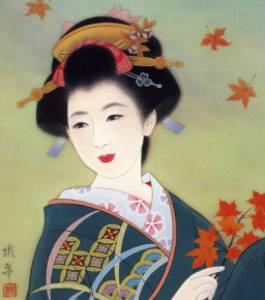
In Japanese lore, the predominance of the samurai may justifiably owe to the training regimen. Yet, the Japanese empire cannot entirely rule out the contribution of an equally remarkable figure: the ninja. Though the samurai had roots in provincial lineage, the ninja had an even lower caste status than others with farming origins. Unlike the samurai, the ninja was versed in guerilla tactics and were reputed to be equipped with powers that befuddled the imagination.
Mostly shunned by the higher ranking footmen of the Edo period in Japanese history, the ninja is primarily recognized through epic accounts of guerrilla tactics recounted through centuries old folklore. The ninja reigned unscathed over the battlefield through the cunning use of: espionage, sabotage, and assassination. That boldness has been preserved through the typical mediums: plays, novels, comics, and all types of animation both in film and television; not to mention, the video game industry where the ninja has proved profitable through ingenious reincarnation. The fantasy behind the reality has undergone fundamental as well as aesthetic embellishments to synchronize with modern technological advancements, as one might expect. Of the countless speculation in existence, one commentary provided by blog editor Mary Jaksch is the most inculcating.
We know little about the origins of the Ninja, the ‘children of darkness’. They practiced the arts of stealth and invisibility in the mist-shrouded mountains of medieval Japan. It is thought that these warriors were ex-military men who fled China after the collapse of the T’ang dynasty and settled in Japan. When they arrived in Japan, the Ninja became teachers of martial arts, philosophy, and mysticism adapted from the esoteric knowledge of India and Tibet and the spiritual practices of Chinese monks and shamans.
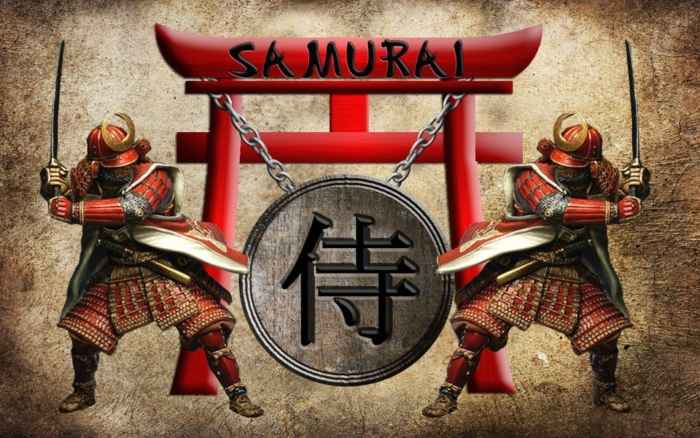
Unless you were alive over 2,000 years ago when this chapter in history began, or were fortunate enough to watch the martial arts films that filled theaters across the United States during the 1970s, or watched the serialized TV movies at home during weekends, these moments are unfathomable for most people. Yet, there are other noteworthy historical figures in other parts of the world that prevail about the same time or not long after which have reached a level of greater appeal than most. Like the samurai, King Arthur entered the literary canon through his adeptness with the sword and on horseback long before the time of airplanes, tanks, submarines or motion pictures. Not all of the heady or tactile craftiness exhibited by the ninja was confined to one part of the world or a single point in time for that matter. In France, Nostradamus was conjuring volumes of hypothetical ploys that captured the attention of not only the general public but also the royal entourage and may or may not have inspired military generals, as Napoleon might have been by Sun Tzu. Therefore, this analysis of one particular form of strategic confrontation concludes by noting other eras and continents in order to better resonate those traits and characteristics that are universal in nature and that have existed and continue to exist as a bastion of the past and a forerunner of the future. The option to embrace either of the cultures addressed in this article rests with personal preference and is only limited by the medium, that is: history books, novels, songs, plays, cinema, so on.
In medieval Britain, there was an account of an equally prominent figure. During his time, King Arthur would keep warring clans at bay, wield a victorious sword, consort with the wizardry of Merlin, and prevail over a vast expanse of land through the Knights of the Round Table. King Arthur’s prodigious reign during the Dark Ages may be the reason behind the aura surrounding his origin and his ultimate demise. Nonetheless, King Arthur has become a longstanding source for dramatic performance both in entertainment for live audience and in print for avid readers. The prowess displayed by King Arthur and his legion of loyal Knights could have conceivably benefited in some measure from prophecies, just as any foreign army or distant nation seeking an advantage would admittedly consign to. The legendary warrior had a momentary place in history, but, an enduring lifespan in books — stemming from the belief that the fabled King would eventually awake from his rest to rescue Britain from further attacks on the horizon.
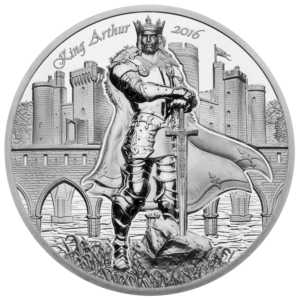
The desire for gaining an edge in military confrontation is not so insignificant so as to be a matter promptly dismissed. The art behind the craft has been wielded by unusual characters and pursued by the unlikely few. Michel de Nostredame was born in France and was a follower of the Catholic Church. Soon after studying the classics and eventually completing medical school, he married twice and raised several children as a physician. He led a life that gave no indication of the one accomplishment that would set him apart from his contemporaries. In 1550, he began to author almanacs containing quatrains exclusively devoted to prophecy of events. Nostradamus wrote a collection of one hundred predictions that were published within those almanacs. The first edition titled, The Prophecies, was published in 1555 under the Latin name Nostradamus and have never gone out of print, purporting to be a source of credible foretelling of world events.
I don’t throw darts at a board. I bet on sure things. Read Sun-tzu, The Art of War (Gordon Gekko in Wall Street 1987 by Director Oliver Stone)
In a manner emulating the refashioning of the King Arthur narrative indicated earlier, the Nostradamus variety has circulated continuously since its initial publication. An occurrence that may be explained by the penchant for early revelation of natural disasters, wars, and other climactic events. Though largely downplayed by contemporary critics for inaccuracies or for thin extrapolations, these predictions drew attention as equally from skeptics as from the nobility. Most notably, the French monarch placed a heightened fascination on the lines of horoscope contrived by Nostradamus to the point where he was named counselor to members of the royal family. The French monarch, Catherine de Médicis, retained Nostradamus as the resident physician to the heir, King Charles IX, adding to the stature of the publication. A matter no less astounding since Nostradamus has been widely and incessantly published beyond the French border.
I lived in the karyukai during the 1960s and 1970s, a time when Japan was undergoing the radical transformation from a post-feudal to a modern society. But I existed in a world apart, a special realm whose mission and identity depended on preserving the time-honored traditions of the past. (Mineko Iwasaki, Geisha: A Life)
There is currently no western equivalent for a geisha—they are truly the most impeccable form of Japanese art. (Kenneth Champeon, The Floating World)

The most memorable people are generally those who possess a unique ability or those who indelibly mark a point in time into an unforgettable moment merely by saying or by doing something extraordinary. The preceding themes expressed the variety of valuable contributions made by distinctive historical figures along with their enduring altruistic legacy. The stories rekindled by: The Prophecies, The Art of War, The Analects of Confucius, the gallantry of King Arthur, and the Japanese aristocracy will continue to prove important as a prolific topic for publishing houses, fertile ground for the silver screen or the television screen, impetus for iconic songwriting; if not, fodder for the imagination — young and old, male or female, fan or critic, pacifist or aggressor, believer or skeptic.
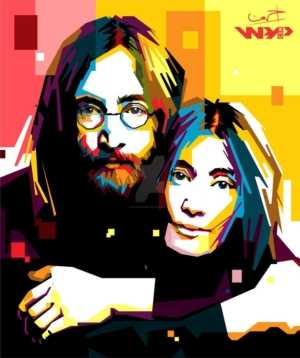
What do you think? Leave a comment.











I recently read Yoko Ono’s book Grapefruit. Highly recommended for all artists.
I carried this book around for about a year when I first got it. I was maybe 14 years old. No one I knew understood why. But it made more sense to me than the world around me did. It still does.
PS. Intriguing article.
Yup it is both fun and a triumph of conceptual artwork at the same time. I’m glad this book exists!
Really cool Samurai poem.
My favorite poem from the samurai era is by Toyotomi Hideyoshi:
“My life
came like dew
disappears like dew.
All of Naniwa
is dream after dream.””
I saved one of my Japanese Samurai poetry (by Yorimasa):
Like a rotten log
half buried in the ground –
my life, which
has not flowered, comes
to this sad end.
wow!
The Art of War can be applied to many different life scenarios and not just war.
I like how Sun Tzu wrote it more than 2,500 years ago and it is still referenced and used today.
The Art of War sounds like it would be a long-winded rant about the rules of conflict and the complications of battle.
No, it reads as a straight-forward commentary regarding ancient leadership and warfare.
Sun Tzu was truly the master of war. I have read much of work on him.
A good starting point for thinking about Confucius is that he was concerned with training rulers and subjects.
No life without a daily dose of Confucius. 🙂 To him, there is essentially no distinction between the ethical and the political.
I love the versatility of sun tzu, often regarded as a military genius, the art of war is applicable not only to war and battles, but to politics and many other areas of study.
Japanese Nō theatre is very interesting!
Loved this article! Learned so much😀
A most interesting read.
This was quite an interesting read. I liked the composition and ease of the flow of the words. My only thing would be that you may have to source some of the factual things that are stated within, researched materials such as dates and other events that aren’t common knowledge. Although, I’m not sure how the Artifice is with sourcing things like this. Either way it’s really good.
Interesting article however I would like to read more about Geishas, although I know it wasn’t about that. Adding dates would have been helpful because in certain movies Geishas are sometimes depicted as “entertainers.”
A bit verbose but I appreciate the overview of the cultural influence that historical Asian societies have had on current society. It’s fascinating to look back at what is remembered and celebrated throughout time and what is forgotten. Perhaps there is some truth hidden in why certain things capture our imagination and others are left to the past.
Good article!
This was really neat. Thanks for the good read.
An interesting essay. I enjoyed your discussion of Sun Tzu.
The Japanese poem seems to be a good representation of Japanese culture of its age with its Buddhism and its draw toward the martial.